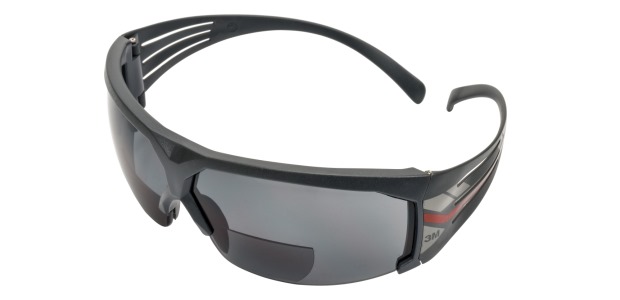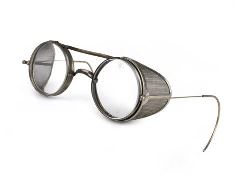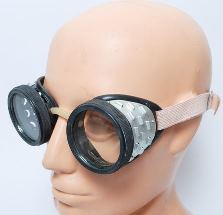
How Protective Eyewear Has Changed Dramatically Over the Decades
Today's safety eyewear can be so lightweight and comfortable that at times workers don't even notice they are wearing it once it's on.
- By Gilbert R. Igo
- Jun 01, 2017
Protective eyewear has come a long way since it was first invented in 1880. P. Johnson's patented "eye protector" used two layers of semi-opaque cloth. His goal was to have firemen, furnace-men, and others exposed to bright lights use them to reduce the intensity. However, his "eye protector" did not yet offer any impact protection.
Today, safety eyewear is worn by those working in the manufacturing, construction, and medical industries to protect their eyes from impact, particles in the air, glare, and, in some cases, harmful ultraviolet light rays. In honor of National Safety Month, below is an overview of the history of vision protection leading up to 2017, where recent and continued advances in safety eyewear—from style and fit to functionality—give great reasons for workers to want to wear modern day protective eyewear.
The History of Safety Eyewear
In 1903, French scientist Edouard Benedictus made a clumsy mistake that led to his invention of safety glass. He was climbing a ladder in his laboratory to retrieve reagents from a shelf when he knocked a glass flask to the floor. He heard the glass shatter but then, to his astonishment, discovered that the pieces of the broken flask still hung together, essentially in their original contour. Benedictus inspected the situation and found the flask had recently held a solution of cellulose nitrate, a liquid plastic. Although it had evaporated or been washed out of the flask, it appeared to have deposited a thin coating of plastic on the flask's interior.
Shortly thereafter, when reading a story in the Paris newspaper about a recent rash of automobile accidents in which drivers were seriously injured by shattered glass windshields, Benedictus had the idea to experiment with the liquid plastic by using it to coat glass and thereby create safety glass that could be used in automobile windshields.
 Meanwhile, around the same time in the United States, America's first teacher of optics, Julius King, grew concerned about industrial eye injuries. As a result, his company set up an industrial safety and eye protection department and, in 1909, the Julius King Optical Company developed the first safety goggle in collaboration with American Optical. They were called SANIGLAS.
Meanwhile, around the same time in the United States, America's first teacher of optics, Julius King, grew concerned about industrial eye injuries. As a result, his company set up an industrial safety and eye protection department and, in 1909, the Julius King Optical Company developed the first safety goggle in collaboration with American Optical. They were called SANIGLAS.
A few years later, in 1914, American Optical urged the industry to also pay attention to the importance of providing prescription lenses in the safety goggles of workers with imperfect vision.
 By 1935, Furnace Goggles were invented for "furnace men and forge workers" to protect their eyes from impact hazards, glare, and harmful light. Melter's Goggles were also available for "steel melters" to protect their eyes from sparks, flying scale, and glare. Shortly thereafter, in 1940, American Optical published the first policy on the relationship between "Ophthalmic Professions to Industrial Safety and Visual Efficiency."
By 1935, Furnace Goggles were invented for "furnace men and forge workers" to protect their eyes from impact hazards, glare, and harmful light. Melter's Goggles were also available for "steel melters" to protect their eyes from sparks, flying scale, and glare. Shortly thereafter, in 1940, American Optical published the first policy on the relationship between "Ophthalmic Professions to Industrial Safety and Visual Efficiency."
It's clear from the photos that the first safety eyewear was heavy and unquestionably ugly. It wasn't until after the ANSI standards changed in 1979, and eyewear was no longer required to be certain shapes but could instead be designed in any form if it passed high-speed and high-impact tests, that safety glasses started to become more fashionable.
Modern Day Vision Protection
Many safety glasses today are compatible with other safety gear, such as welding helmets and hard hats, and companies such as 3M continue to invent new products that improve the overall effectiveness of vision protection for workers.
Since fogging is the number one problem with safety eyewear cited by users—especially because the tighter the glasses fit, the more susceptible they become to fogging—companies have created anti-fog lens coatings that not only help maintain uninterrupted visibility, but also help increase productivity. Anti-fog coatings are designed for working in hot and humid conditions, on physically demanding tasks, and in climate-controlled areas. Many of today's advanced lens coating technologies manipulate moisture through surfactants coated on the surface.
One such coating causes moisture droplets to flatten out and form a thin film, reducing the scattering of light and allowing workers to see more clearly. This advancement brings higher performance to safety eyewear by resisting fogging longer than traditional anti-fog coatings after washing multiple times—up to 25 washings. It is also more scratch-resistant than traditional anti-fog coatings.
Another common concern regarding safety eyewear today is comfort: ensuring a snug fit that protects eyes from particles but doesn’t become too tight around the temples, potentially prompting workers to want to remove them at times they should not. Many manufacturers have added comfort features such as adjustable nose pieces, side arms that can expand and lengthen based on head circumference, padding where the glasses rest on the ears and nose, and a lightweight design.
Many of today's safety glasses are also available with a foam-lined gasket to help limit eye exposure to debris while providing added comfort and cushioning. This also helps to reduce self-inflicted eye injuries that may occur when the worker rubs his or her eye due to debris falling into it, possibly resulting in a scratched cornea.
Today's safety glasses are also available with gray-tinted and polarized lens to help reduce glare and reflections, respectively, as well as photochromic lenses that automatically adjust to UV rays from sunlight. In addition, they are available with built-in "reading lenses" at the bottom of the lens for close-up work, as well as prescription inserts for workers who prefer not to wear contacts or glasses while they work.
Conclusion
Eye protection is vital to safeguard your eyes and maintain healthy vision across a wide variety of jobs. Wearing the correct protective eyewear for the task and for the unique needs of the worker is equally important. It is important always to perform inspections as recommended in manufacturer’s user instructions, including to inspect eyewear daily for scratches that can impact the glasses' effectiveness.
While anti-fog coating can help prolong the life of safety glasses, the best way to take care of them is by washing them with soap and water—or at least water—and then drying them with a soft tissue. Never rub them on or with jackets, shirts, or uniforms that may scratch them.
Today's safety eyewear can be so lightweight and comfortable that at times workers don't even notice they are wearing it once it's on. It is also much more attractive and stylish, especially compared with eyewear in the early twentieth century, leaving workers with even more reason to want to wear it.
This article originally appeared in the June 2017 issue of Occupational Health & Safety.